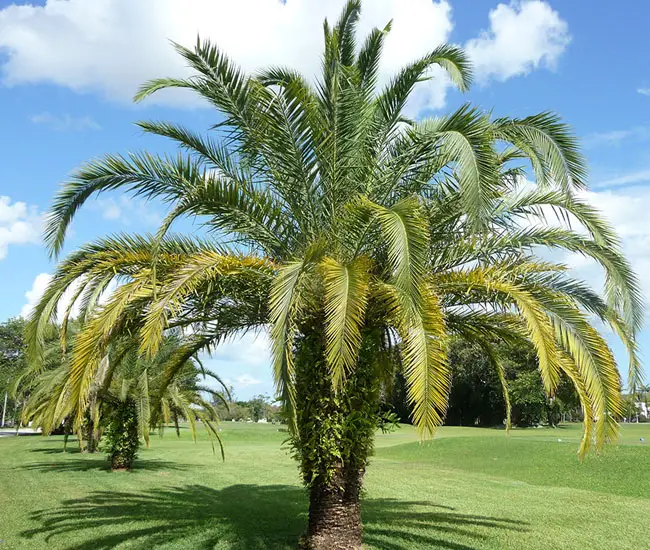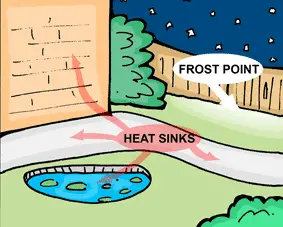
Have you ever wondered how some gardeners manage to cultivate gorgeous palm trees in cold climates, seemingly creating their own tropical paradise while others struggle? The secret to their success might just be the microclimate.
A microclimate is a relatively small area, often just a few yards or even smaller, that possesses a climate slightly different from the general climate of the surrounding region.
This small area’s conditions are typically influenced by factors such as humidity, topography, wind patterns, heat balance, evaporation, sunlight exposure, shade, and more.
If you’ve ever noticed that the temperature in your immediate area tends to be consistently colder or warmer than what’s forecasted, chances are you’re residing in a microclimate.
For example, if you have hills that shield your house from cold winds, they may help maintain higher temperatures in your vicinity.
Microclimates play a vital role in the successful cultivation of cold-hardy palms. In colder climates, the presence of a microclimate can significantly impact the variety of palm species you can successfully grow.
Gardeners residing in a favorable microclimate might be able to nurture as many as 400 palm species, while others, not as fortunate, may be limited to just 50 species.
When considering microclimates, think about factors like moisture and shade. You can create a microclimate in your home garden by strategically using buildings, ponds, fences, rocks, and patios.
Through experimentation with these elements, you’ll be able to create areas with varying temperatures, sunlight exposure, and humidity levels.
Hills and Valleys
If you reside in a cold valley, you’ll likely experience colder temperatures compared to what’s indicated on the general climate map. Additionally, you may have a shorter growing season due to late spring and early fall frosts.
Growing palm trees in such areas can be challenging, regardless of where you plant them. On the other hand, planting on the hillside can provide protection and benefits.
Hills receive more sunlight throughout the day, and at night, they radiate warmth, making the higher areas of the hill warmer than the lower ones. This topography can be advantageous for palm cultivation in colder regions.
Buildings, Rocks, and Fences

Palms that are situated near rocks, buildings, fences, or paved surfaces often benefit from the protection they provide against the wind and their ability to radiate heat.
These structures absorb warmth throughout the day and release it at night, helping to keep palms warm during near-freezing nights. This modest amount of heat can make a significant difference in palm survival.
Planting on the south side of a wall can also be advantageous. The wall reflects enough heat to shield the palm from freezing during the night.
Protective Canopy
A protective canopy can be a crucial factor for marginally cold-hardy palms. Dense canopy trees act like a cozy blanket, regulating temperatures and offering shelter.
On cold nights, the air beneath the canopy can be 5-10 degrees warmer than the unprotected surroundings.
However, it’s important to note that a dense canopy will reduce the sunlight reaching your palm, so choose a palm species that can tolerate shade.
Soil
The type of soil can also affect the microclimate. Clay soil behaves similarly to pavement, trapping heat and moderating temperatures.
Light soil with air pockets can trap heat beneath the ground, acting as an insulating layer between the subsoil and the frost at ground level.
These are just a few strategies you can employ to create a more favorable climate in your garden and cultivate a wider variety of palm trees.
It’s worth keeping in mind that cold-hardy palms can thrive in a broad range of locations, and tropical landscapes are no longer limited to tropical climates.
Related articles:
- Palm Tree Cold Protection
- How to Save Cold-Damaged Palm Tree
- Top 10 Cold Hardy Palm Trees
- Top 5 Factors Affecting Cold Hardy Palm Tree Growth

Thanks for pointing out that if you live in a valley you tend to have colder temperatures at your house. You also mention planting on the side of a hill since they tend to get more sunlight, therefore protecting your plants. I think it’s good to choose a plant that is native to your area so that if it does grow and spread outside it’s not cutting off nutrients to the native flora.